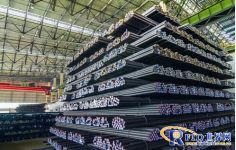
Shanghai Futures Exchange uses barcodes to trace commodities
[ad_1]

Zhai Hong, International College of Ningbo Vocational and Technical College / Text
It is the first time to carry out a pilot program of centralized application of barcode technology in the non-ferrous metal industry, which has a demonstration effect and promotion value for promoting the expansion of barcode technology from retail commodity consumption to bulk commodities (such as non-ferrous metals, steel, etc.).
Bar code technology entered China in the 1980s and has been widely used in commercial supermarkets, postal express delivery, book management, banking systems and other fields, but the application of bar code technology in the field of non-ferrous metals, steel and other bulk commodities has just started. Relying on manual operations when bulk commodities are put into storage is inefficient and error-prone. In recent years, many warehousing units and production enterprises have begun to try to develop barcode technology, but they are limited to their independent non-networked operation methods, which are far from the efficiency and convenience of barcode technology. In July 2013, Shanghai Futures Exchange took the lead in signing a cooperation agreement with some logistics delivery warehouses, and launched a pilot program for the centralized application of barcode technology in the non-ferrous metal industry.
Shanghai Futures Exchange takes delivery warehouses and non-ferrous metal registered brand manufacturers as pilots. By formulating unified coding technical rules, hardware and software configuration, operation procedures, etc., it is the first time to carry out a pilot program of centralized application of barcode technology in the non-ferrous metal industry. The expansion of consumption to the field of bulk commodities (such as non-ferrous metals, steel, etc.) has a demonstration effect and promotion value.
After more than a year of pilot operation, the pilot units standardized and unified the barcode compilation rules, and set up a “file library” for the goods in storage. Scan the barcode to view the relevant product model, manufacturer, production date, quality grade, etc. The pilot warehouse has also improved its warehousing operations through software and hardware transformation, and gradually applied barcode technology to improve the warehouse operation. At the same time, the relevant warehousing enterprises have also transformed the original barcode technology, realizing the electronic exchange and business docking of different forms of shipment data with the pilot warehouses. The bar code technology pilot also facilitates the end users of the industry chain. As long as they scan the bar code, they can quickly locate the products they need, and can conduct source traceability queries, so that there is nowhere to hide the hidden dangers of product quality.
The experience of bar code technology pilot is of great significance for improving the technical standards, logistics efficiency and delivery level of the entire industry. First, the pilot areas can be gradually expanded and extended to the fields of precious metals, rebar, polyethylene, polyvinyl chloride, fiberboard, plywood and other bulk commodities in a timely manner, so as to realize the standardization, standardization and efficiency of the bulk commodity delivery system in the whole industry. Second, commodity spot exchanges (centers) established in various places should actively strive for first-mover advantages, speed up the pace of integration with international standards, and adopt barcode technology in the spot delivery of various commodities to enhance their own industry competitiveness and serve the regional economy. s level. Third, as the Internet of Things technology continues to mature, the cross-system, cross-region, and cross-industry information interaction, coordination and information sharing between heterogeneous systems are gradually increasing, and other coding standards such as QR codes can be selected when conditions are ripe. .
[ad_2]



